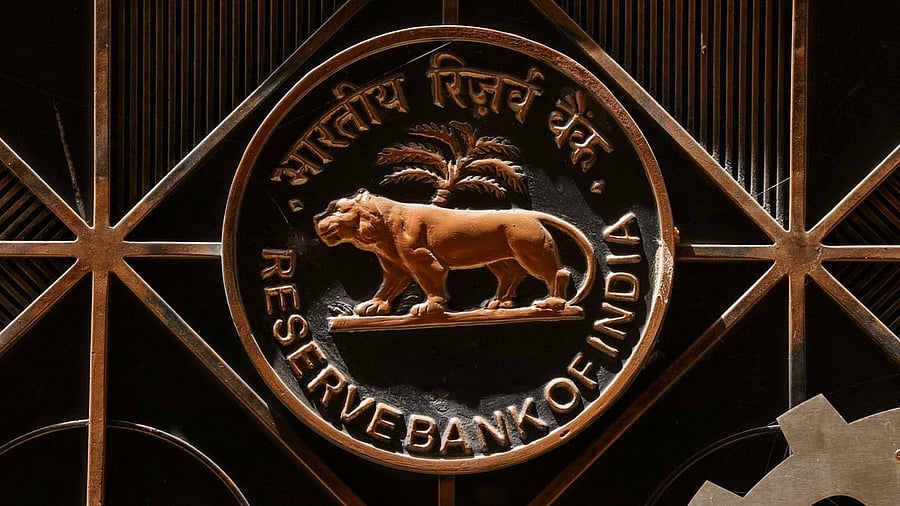
A Reserve Bank of India (RBI) logo.
Credit: Reuters Photo
Prime Minister Narendra Modi has been hawking India as the best investment destination for years. Finance Minister Nirmala Sitharaman has also been desperately trying to shake up sleeping Hanumans to make investments. Yet, the investors’ animal spirits remained sedated.
The government tried other tricks.
It embarked on a significant capital investment binge, spending trillions of rupees to stimulate private investment. To boost enervated consumers, the government unleashed an income tax-cut bonanza of Rs 1 lakh-crore and a double Diwali gift of Rs 2 lakh-crore in GST cuts.
Still, the results have been only lukewarm.
The government and the Reserve Bank of India (RBI) are now trying to use the last arrow in their quiver. The central bank has massively unshackled the credit tap for all investors, including asset builders, asset traders, and those picking stocks and bonds.
Will this unprecedented unlocking of credit deliver investments, or generate another dose of non-performing assets (NPAs) and stock market scams?
Liberalisation primarily targets asset traders
RBI Governor Sanjay Malhotra’s slew of measures primarily aims at pushing banks to finance investment traders and stock market investors.
For the real investors, those who build factories and other infrastructure, there is only one major measure — withdrawal of the 2016 circular, which placed restrictions on banks’ lending to a single corporate borrower more than Rs 10,000 crore. This is fine as it removes an unnecessary risk-averseness, brought in by an overcautious Raghuram Rajan/Urjit Patel team.
The boldest — probably quite reckless — move is to allow banks to finance the mergers and acquisitions (M&A) by Indian corporates. The M&A finance has been a complete no-go area as such finance does not create any new productive asset and fire up aggressive purchase of existing businesses.
Another unwise move is to allow real estate and stock purchase financing, which, for decades, the RBI has been religiously against. Now, the banks can lend against listed debt securities and against shares (from Rs 20 lakh to Rs 1 crore) and for IPOs (from Rs 10 lakh to Rs 25 lakh per person), along with financing brokerages.
The RBI wants Indian banks to become financial Rambos.
Ignoring decades of caution
The Harshad Mehta scam had its genesis in the fraudulent use of bank receipts (BRs) to take humongous loans from the State Bank of India to ratchet up the stock market. The Ketan Parikh scam also had its roots in manipulating bank finance for stock market operations. No wonder successive RBI governors made it nearly impossible to get bank finance for stock purchases.
Real estate, primarily land financing, has been the riskiest as it leads to shooting up of land prices, ultimately causing both banks and corporates to fail — look at Japan’s lost three decades since the 1990s. Quite understandably, Indian banks were strictly prohibited from lending for purchasing land parcels.
The M&A finance is the trickiest. Banks have no idea about the real worth of the target company/asset and the real objectives of the buyers. Even specialised M&A deal makers, like the investment bankers, who know the game, get it wrong many times. US history is full of M&A financial misadventures. Indian banks, being the most unsuited to undertake M&A finance, have been completely barred from M&A finance. However, years of experience and caution have suddenly been thrown to the winds. The public sector banks (PSBs) are most likely to get pushed into this whirlwind.
Insatiable hunger
The suddenness of this unprecedented, unexpected, and brazen liberalisation of bank finance is surprising. There has been no background to its unlocking of what everyone assumed to be no-go areas for banks.
Malhotra is unlikely to have done it on its own.
A big Indian corporate house has been on the prowl for assets acquisition. Its sharp practices and misdemeanours have deprived it of international finance and Indian equity. Reports suggest that this group, not only want to buy big land parcels in many states but also the assets of another rogue operator running into thousands of crores.
For the last one year, the stock markets have been in doldrums, despite the government, Indian financial institutions (mutual funds, LIC, etc.) and retail investors (mainly through SIPs) buying all stocks sold by the foreign portfolio investors (FPIs). Stock market operators want bank finance for themselves (margin trading) and for retail investors to ramp them up.
In Indian mythology, Bakasura is said to have had an insatiable appetite. The Bakasura metaphor aptly applies to the insatiable hunger we see in today’s corporate world to buy assets. The stock market operators are baby Bakasuras.
India must be careful
Perhaps, clandestine and indirect pressure was applied by corporates and stock market operators on the RBI, which explains this unprecedented and unwise uncorking of the bank financing for M&A, and the purchase of lands and stocks.
India must carefully monitor which banks take the lead in unlocking such unproductive finance, the amount of such financing that emerges, and who benefits from such lending.
Bakasura caused great misery to the people, and after creating great havoc, was put to rest by Bhima in the Mahabharata.
It will be sad if this unwise unlocking of bank finance leads to the re-emergence of NPAs, bank losses, and economic pain.
The RBI will do well to rethink and retrace its steps.
(Subhash Chandra Garg is former Finance & Economic Affairs Secretary, and author of ‘The Ten Trillion Dream Dented’, ‘Commentary on Budget 2025-2026’, and ‘We Also Make Policy’.)
(Disclaimer: The views expressed above are the author's own. They do not necessarily reflect the views of DH.)